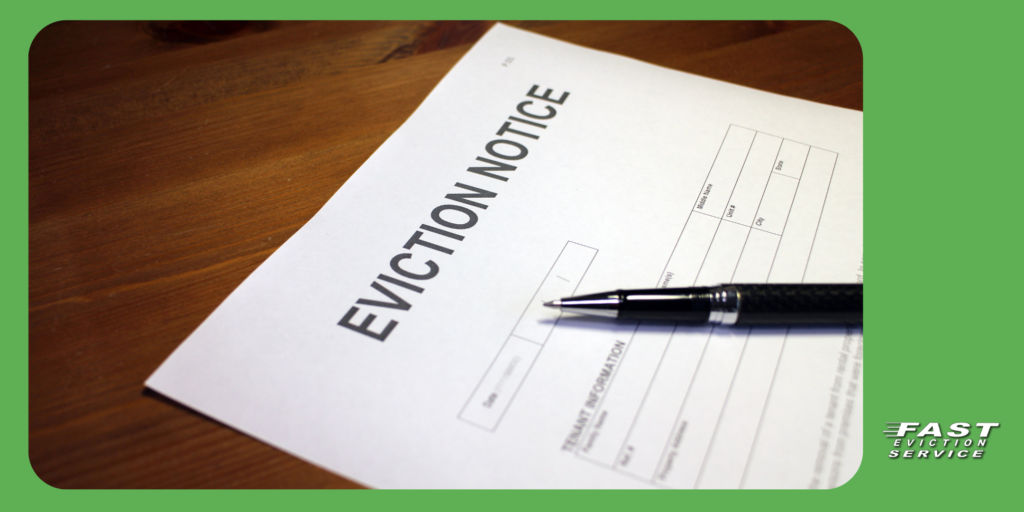You are represented at all times by one of our California Eviction Attorneys | 1-800-686-8686 | intake@fastevict.com | Se habla español
How to Evict a Tenant in Ventura for Nonpayment of Rent
Updated 8/01/2024
Navigating the eviction process can be a challenging and stressful experience for landlords, especially when dealing with nonpayment of rent. In Ventura County, specific steps must be followed to ensure the eviction is handled legally and efficiently. In this article, we will walk you through the Ventura County eviction process for nonpayment of rent. If you have any questions or need further assistance, please contact us for a free consultation.

Step 1: Serve a Notice to Pay Rent or Quit
The first step in the Ventura County eviction process is to serve the tenant with a Notice to Pay Rent or Quit. This notice informs the tenant that they have a specific number of days to pay the overdue rent or vacate the property. In California, the standard period is three days. Ensure the notice includes:
- The amount of rent due.
- The date by which the rent must be paid.
- Instructions on how and where the payment should be made.
- A statement that the tenancy will be terminated if the rent is not paid within the specified time frame.
Step 2: Wait for the Tenant’s Response
After serving the Notice to Pay Rent or Quit, you must wait for the tenant to respond. The tenant has three days to pay the overdue rent or vacate the property. If the tenant pays the rent within this period, the eviction process stops. If the tenant fails to pay or vacate, you can proceed with the next step.
Step 3: File an Unlawful Detainer Lawsuit
If the tenant does not comply with the notice, you will need to file an unlawful detainer lawsuit to begin the formal eviction process. This involves filing the necessary paperwork with the Ventura County Superior Court and paying the associated filing fees. The key documents you need to file include:
- Complaint – Unlawful Detainer (Form UD-100)
- Summons – Unlawful Detainer – Eviction (Form SUM-130)
- Civil Case Cover Sheet (Form CM-010)
- Plaintiff’s Mandatory Cover Sheet and Supplemental Allegations – Unlawful Detainer (Form UD-101)
Step 4: Serve the Summons and Complaint
After filing the lawsuit, you must serve the tenant with the Summons and Complaint. This can be done through a process server, sheriff, or any adult not involved in the case. Proper service is crucial to ensure the tenant is formally notified of the lawsuit and has the opportunity to respond.
Step 5: Wait for the Tenant’s Answer
The tenant has five days to respond to the Summons and Complaint. They can either file an Answer, contesting the eviction, or choose not to respond. If the tenant does not respond within the given time frame, you can request a default judgment from the court.
Step 6: Court Hearing
If the tenant files an Answer, the court will set a hearing date. Both parties will have the opportunity to present their case. As the landlord, you should bring all relevant documentation, including the lease agreement, payment records, and a copy of the Notice to Pay Rent or Quit. The judge will review the evidence and make a decision.
Step 7: Obtain a Judgment
If the court rules in your favor, you will receive a judgment for possession of the property. This judgment legally entitles you to regain possession of your rental property. In some cases, the court may also grant you a monetary judgment for the unpaid rent and any other costs incurred.
Step 8: Writ of Possession
After obtaining a judgment, you must request a Writ of Possession from the court. This document authorizes the sheriff to remove the tenant from the property if they do not leave voluntarily. The sheriff will serve the tenant with a notice to vacate, typically giving them five days to move out.
Step 9: Sheriff Lockout
Related: The Eviction Process in California: Understanding How Evictions Work
If the tenant fails to vacate the property within the time specified in the notice to vacate, the sheriff will perform a lockout. During the lockout, the sheriff will remove the tenant and their belongings from the property, and you will regain possession of your rental unit.
The Ventura County eviction process for nonpayment of rent involves several critical steps that must be followed meticulously. From serving the initial notice to potentially enlisting the sheriff’s assistance for a lockout, each step requires careful attention to detail and adherence to legal procedures.
If you have any additional questions or need assistance with the Ventura County eviction process, please contact us for a free consultation. We are here to help you navigate these complexities and ensure a smooth and successful eviction process.

